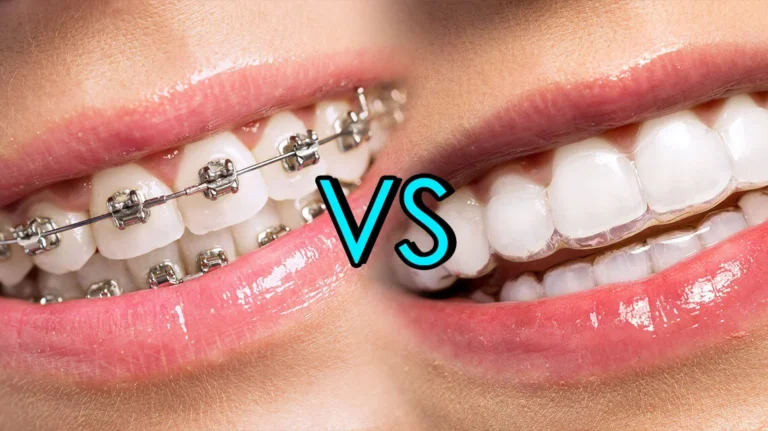When it comes to straightening teeth, there are more choices than ever before. Two of the most common options are clear braces and clear aligners. Both work towards the same end goal, but they fit into everyday life in different ways. Understanding how each one feels, how they affect daily habits, and what kind of results they offer can make the decision much easier.
How They Work
Clear braces use brackets and wires, similar to traditional metal braces, but the brackets are either clear or tooth-coloured so they blend in more with the teeth. They stay fixed in place and are adjusted periodically to keep the teeth moving in the right direction.
Clear aligners are made from thin, clear plastic and fit snugly over the teeth. They come in sets, with each tray slightly different from the last, gradually shifting teeth into a new position. The aligners are removable, so they can be taken out for eating, brushing, and cleaning.
Comfort and Fit
Both treatments create some pressure on the teeth, as this is what causes them to move. With clear braces, this pressure is often more noticeable after an adjustment, and there can also be some irritation from the brackets rubbing against the inside of the mouth. Orthodontic wax can help, but it may still take some getting used to.
Clear aligners tend to feel smoother because there are no brackets or wires. They still apply gentle pressure, but it is often described as more gradual. For people sensitive to sharp edges or frequent friction, aligners may feel more comfortable.
Eating and Drinking Habits
Clear braces stay on at all times, so they require some changes in diet. Hard or sticky foods can damage the brackets or wires, and certain foods and drinks can cause staining. This means avoiding items such as popcorn, chewy sweets, and strongly coloured sauces for the duration of the treatment.
Clear aligners are removed before eating or drinking anything except water, which means no restrictions on food types. However, this also means remembering to brush and floss before putting them back in. Without cleaning, trapped food can lead to decay or staining inside the aligner. For anyone wanting freedom with food choices but willing to manage the extra cleaning, options such as low cost straightening using clear aligners may be worth exploring.
Cleaning and Maintenance
With clear braces, food particles can easily get caught around the brackets and wires. Brushing after every meal becomes more important, and using tools like interdental brushes or water flossers can help reach difficult spots. It can be time-consuming, but it is essential for avoiding plaque build-up.
Clear aligners are easier to clean in the sense that they can be removed. The trays themselves need regular rinsing and a gentle brush, and sometimes a soak in a cleaning solution. Teeth should be cleaned before putting them back in to prevent bacteria and bad breath. The key here is consistency—aligners need to be worn for around 22 hours a day to work properly.
Appearance
Clear braces are less obvious than traditional braces, but the brackets can still be seen when speaking or smiling. Over time, elastic ligatures can stain, especially with foods like curry or drinks like coffee and tea. These stains remain until the next adjustment.
Clear aligners are very discreet. When worn correctly, they are barely visible unless someone is looking closely. For those concerned about how their teeth look during treatment, aligners are often the more appealing option.
Results and Treatment Time
In terms of end results, both clear braces and clear aligners can be effective. Braces are sometimes preferred for more complex cases, as the orthodontist has more control over precise tooth movement. They are also fixed in place, meaning there is no risk of forgetting to wear them.
Aligners have improved greatly over the years and can now treat many complex cases. The main difference is that success with aligners depends heavily on wearing them as instructed. Skipping hours can extend treatment time or affect results. For most people, treatment time is similar for both methods, but it always depends on how much movement is needed.
Impact on Everyday Life
Clear braces require fewer daily decisions because they stay in place, but they do mean adjusting to the food restrictions and cleaning routine. Some people appreciate not having to remember to put anything in or take anything out.
Clear aligners offer flexibility and no food limits, but they require discipline. Forgetting to put them back in after a meal or leaving them out for too long can slow down progress. There is also the added habit of carrying a case for them when going out.
Which Option Is Easier?
The answer depends on personal habits and priorities. For someone who wants to fit treatment into life with minimal thought but doesn’t mind food restrictions, clear braces may be easier. For someone who values being able to eat without limits and prefers a nearly invisible option, aligners may be more suitable—provided they can stick to the wear schedule.
Both options can deliver a straight, healthy smile, so the choice often comes down to lifestyle and what feels more manageable day-to-day.
Key Takeaways
Clear braces and clear aligners both have their strengths. Braces are fixed, so they keep working without reminders, but they come with food restrictions and a more demanding cleaning routine. Aligners are flexible and discreet, with no limits on what can be eaten, but they rely on consistent use. Deciding which is easier depends on whether the priority is convenience of not having to think about it, or the freedom to eat and drink as normal.
